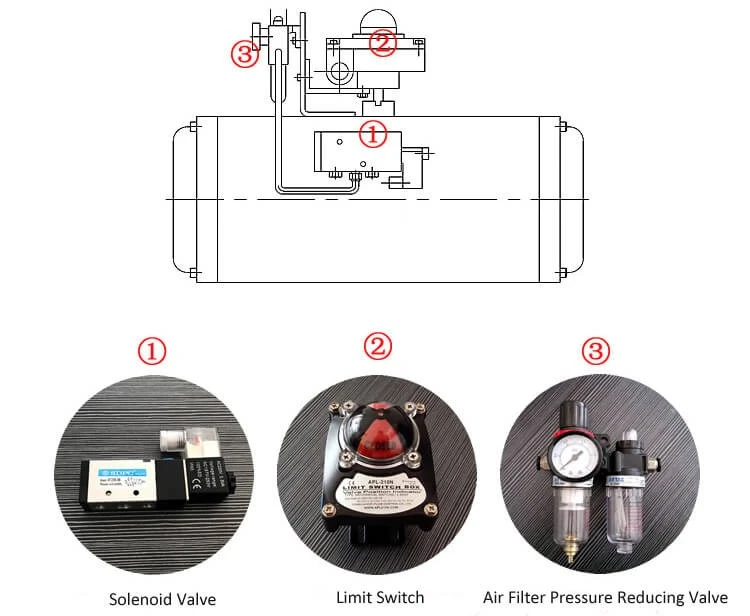How Does a Pneumatic Cylinder Actuator works

Once the air supply pressure enters the center cavity backward and forward pistons from the cylinder in the air port (2), the 2 pistons are separated and moved toward the 2 ends from the cylinder, and also the air from the air chambers at both sides is discharged with the air port (4), and concurrently the piston rack is driven. The output shaft (gear - rotates counterclockwise. On the other hand, once the air supply pressure enters the air chamber at both sides from the cylinder in the port (4), the 2 pistons move toward the center of the cylinder, and also the air from the intermediate cylinder is discharged with the port (2). Synchronize the 2 piston racks they are driving the output shaft (gear) - rotate clockwise. (When the piston is set up in the alternative direction, the output shaft will rotate within the other direction). 2.Schematic of Single Acting Pneumatic Actuator:

Once the air supply pressure enters the center cavity backward and forward pistons from the cylinder in the air port (2), the 2 pistons are separated and moved toward both sides from the cylinder, forcing the springs at both sides to become compressed, and also the air from the air chambers at both sides is discharged with the air port (4). The piston rack is synchronously driven to rotate the output shaft (gear) counterclockwise. Following the air supply pressure is reversed through the solenoid valve, the 2 pistons from the cylinder move in the centre direction underneath the spring pressure from the spring, and also the air within the intermediate air chamber is discharged in the air port (2), and concurrently the 2 piston racks drive the output shaft (gear) rotate clockwise. (When the piston is mounted within the other direction, the output shaft can change to reverse rotation once the spring is reset) Remarks

when order the pneumatic actuated 2-piece ball valve:
1. Pneumatic actuator type: double acting or single acting;
2. It needs to know the medium,temperature,pressure;
3. Accessories required: solenoid valve,limit switch,air filter pressure reducing valve,etc.